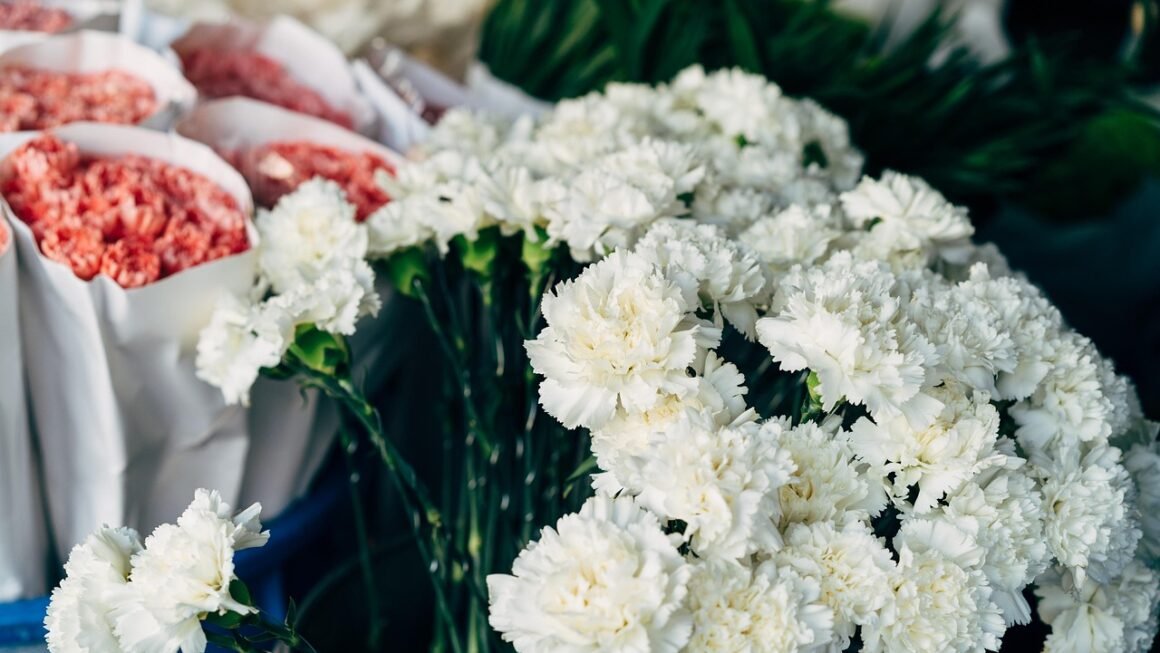Are you ready to unlock the potential of Facebook to grow your business? With billions of active users, Facebook offers unparalleled opportunities to reach your target audience and achieve your marketing goals. This comprehensive guide will walk you through the intricacies of Facebook advertising, from setting up your first campaign to optimizing for maximum ROI. Let’s dive in!
Understanding the Facebook Ads Ecosystem
Why Choose Facebook Ads?
Facebook advertising offers a myriad of benefits for businesses of all sizes. It’s not just about reaching a large audience; it’s about reaching the right audience. Here’s why Facebook Ads should be a key part of your marketing strategy:
- Vast Audience Reach: Access over 2.9 billion monthly active users.
- Precise Targeting: Target users based on demographics, interests, behaviors, and more.
- Measurable Results: Track key metrics like impressions, clicks, conversions, and ROI.
- Flexible Budgets: Start with a small budget and scale as needed.
- Diverse Ad Formats: Choose from a variety of ad formats, including images, videos, carousels, and collections.
- Retargeting Capabilities: Re-engage users who have previously interacted with your website or content.
Key Components of a Facebook Ad Campaign
Before you start creating ads, it’s crucial to understand the structure of a Facebook ad campaign:
- Campaign: This is the highest level and defines your overall advertising objective (e.g., brand awareness, lead generation, sales).
- Ad Set: This level controls your targeting, budget, schedule, and placement (where your ads will appear, such as Facebook, Instagram, Audience Network).
- Ad: This is the creative component, including your ad copy, images or videos, and call-to-action (CTA) button.
- Example:
Let’s say you’re running a campaign to promote a new line of organic dog treats. Your campaign objective might be “Conversions” (driving sales on your website). Your ad set could target dog owners aged 25-54 who are interested in pet care and organic food. Your ad would then feature a compelling image of your dog treats, engaging ad copy, and a “Shop Now” CTA button.
Setting Up Your First Facebook Ad Campaign
Defining Your Campaign Objective
The first step in creating a successful Facebook ad campaign is to clearly define your objective. Facebook offers a range of objectives categorized into three main areas:
- Awareness: Generate interest in your product or service. Options include Brand Awareness and Reach.
- Consideration: Get people to think about your business and seek more information. Options include Traffic, Engagement, App Installs, Video Views, and Lead Generation.
- Conversion: Encourage people to purchase your product or service. Options include Conversions, Catalog Sales, and Store Traffic.
- Example:
If you’re launching a new product, you might start with a “Brand Awareness” campaign to introduce your brand to a wider audience. Once you’ve built awareness, you can then run a “Traffic” campaign to drive people to your website or a “Conversions” campaign to generate sales.
Audience Targeting Strategies
Facebook’s robust targeting options are what set it apart from other advertising platforms. Here are some key targeting strategies:
- Demographic Targeting: Target users based on age, gender, location, education, relationship status, and more.
- Interest Targeting: Reach users who have expressed interest in specific topics, hobbies, or brands.
- Behavioral Targeting: Target users based on their online activities, purchase behaviors, and device usage.
- Custom Audiences: Upload your own customer data (e.g., email list, phone numbers) to target existing customers or create lookalike audiences.
- Lookalike Audiences: Reach new people who are similar to your existing customers. This is a powerful way to expand your reach and find qualified leads.
- Example:
A local gym could target people aged 25-45 who live within a 5-mile radius of the gym and are interested in fitness, health, and weight loss. They could also upload their existing member list to create a lookalike audience to reach potential new members.
Budgeting and Scheduling Your Ads
Carefully planning your budget and schedule is essential for maximizing your ROI. Here are some tips:
- Set a Daily or Lifetime Budget: Choose a daily budget to spend a fixed amount each day or a lifetime budget to spend a fixed amount over the entire duration of your campaign.
- Start Small and Scale Up: Begin with a smaller budget to test your ads and targeting, and then gradually increase your budget as you see positive results.
- Schedule Your Ads: Choose specific times of day or days of the week to run your ads based on when your target audience is most active.
- Consider Bidding Strategies: Facebook offers various bidding strategies, including Lowest Cost, Cost Cap, and Target Cost. Choose the strategy that best aligns with your campaign objectives.
- Example:
If you’re running a limited-time promotion, you might set a lifetime budget and schedule your ads to run for the duration of the promotion. If you’re running an ongoing campaign, you might set a daily budget and continuously monitor your results to optimize your spending.
Crafting High-Converting Facebook Ads
Compelling Ad Copy
Your ad copy is your opportunity to grab attention and persuade users to take action. Here are some tips for writing effective ad copy:
- Highlight Benefits, Not Just Features: Focus on how your product or service will solve a problem or improve the user’s life.
- Use Strong Action Verbs: Start your call-to-action with words like “Shop,” “Learn,” “Get,” or “Download.”
- Keep it Concise and Clear: Get straight to the point and avoid jargon.
- Ask Questions: Engage your audience by asking questions related to their needs or interests.
- Use Social Proof: Include testimonials, reviews, or statistics to build trust.
- Example:
Instead of saying “Our coffee beans are ethically sourced,” try “Enjoy delicious, ethically sourced coffee that supports sustainable farming practices.”
Visual Appeal: Images and Videos
Visual content is crucial for capturing attention in the crowded Facebook newsfeed.
- Use High-Quality Images: Ensure your images are clear, well-lit, and visually appealing.
- Experiment with Video: Video ads tend to perform better than static images, especially for demonstrating product features or telling a story.
- Optimize for Mobile: Most Facebook users access the platform on mobile devices, so make sure your images and videos are optimized for mobile viewing.
- Use Text Overlays Sparingly: Facebook’s algorithm prefers images with minimal text overlays.
- Example:
A clothing brand could use a lifestyle image showcasing their clothes being worn in a real-world setting. Alternatively, they could create a short video demonstrating the versatility and quality of their clothing.
Call-to-Action (CTA) Buttons
Your CTA button is what prompts users to take the next step. Choose a CTA that aligns with your campaign objective:
- Shop Now: For driving sales.
- Learn More: For providing more information.
- Sign Up: For collecting leads or email subscribers.
- Download: For offering a free resource or app.
- Book Now: For scheduling appointments or reservations.
- Watch More: For promoting video content.
- Example:
If you’re running a lead generation campaign, use the “Sign Up” CTA button. If you’re promoting a new product, use the “Shop Now” button.
Tracking and Optimizing Your Facebook Ad Campaigns
Key Performance Indicators (KPIs)
Tracking the right KPIs is essential for measuring the success of your Facebook ad campaigns. Here are some key metrics to monitor:
- Impressions: The number of times your ad was displayed.
- Reach: The number of unique people who saw your ad.
- Click-Through Rate (CTR): The percentage of people who clicked on your ad after seeing it.
- Cost Per Click (CPC): The average cost of each click on your ad.
- Conversion Rate: The percentage of people who completed a desired action (e.g., purchase, sign-up) after clicking on your ad.
- Return on Ad Spend (ROAS): The revenue generated for every dollar spent on advertising.
A/B Testing for Optimization
A/B testing involves creating multiple versions of your ad with slight variations and then testing them against each other to see which performs best. This is a powerful way to optimize your ads and improve your results.
- Test Different Ad Copy: Experiment with different headlines, body text, and CTAs.
- Test Different Images and Videos: Try different visuals to see which resonates most with your audience.
- Test Different Targeting Options: Experiment with different demographics, interests, and behaviors.
- Test Different Placements: See how your ads perform on Facebook, Instagram, and Audience Network.
- Example:
You could A/B test two versions of your ad, one with a humorous headline and another with a more serious headline, to see which generates a higher CTR.
Using Facebook Pixel for Conversion Tracking
The Facebook Pixel is a small piece of code that you place on your website to track conversions and other website events. This allows you to measure the effectiveness of your Facebook ad campaigns and optimize for conversions.
- Track Key Events: Set up the Facebook Pixel to track key events such as purchases, sign-ups, and add-to-carts.
- Retarget Website Visitors: Use the Facebook Pixel to retarget people who have visited your website but haven’t yet converted.
- Optimize for Conversions: Use the Facebook Pixel to optimize your ads for conversions and drive more sales.
Conclusion
Facebook advertising is a powerful tool for businesses of all sizes. By understanding the fundamentals, crafting compelling ads, and continuously tracking and optimizing your campaigns, you can unlock the full potential of Facebook and achieve your marketing goals. Remember to stay adaptable, keep testing new strategies, and let data guide your decisions. Happy advertising!



